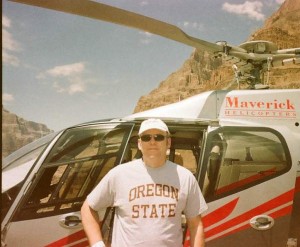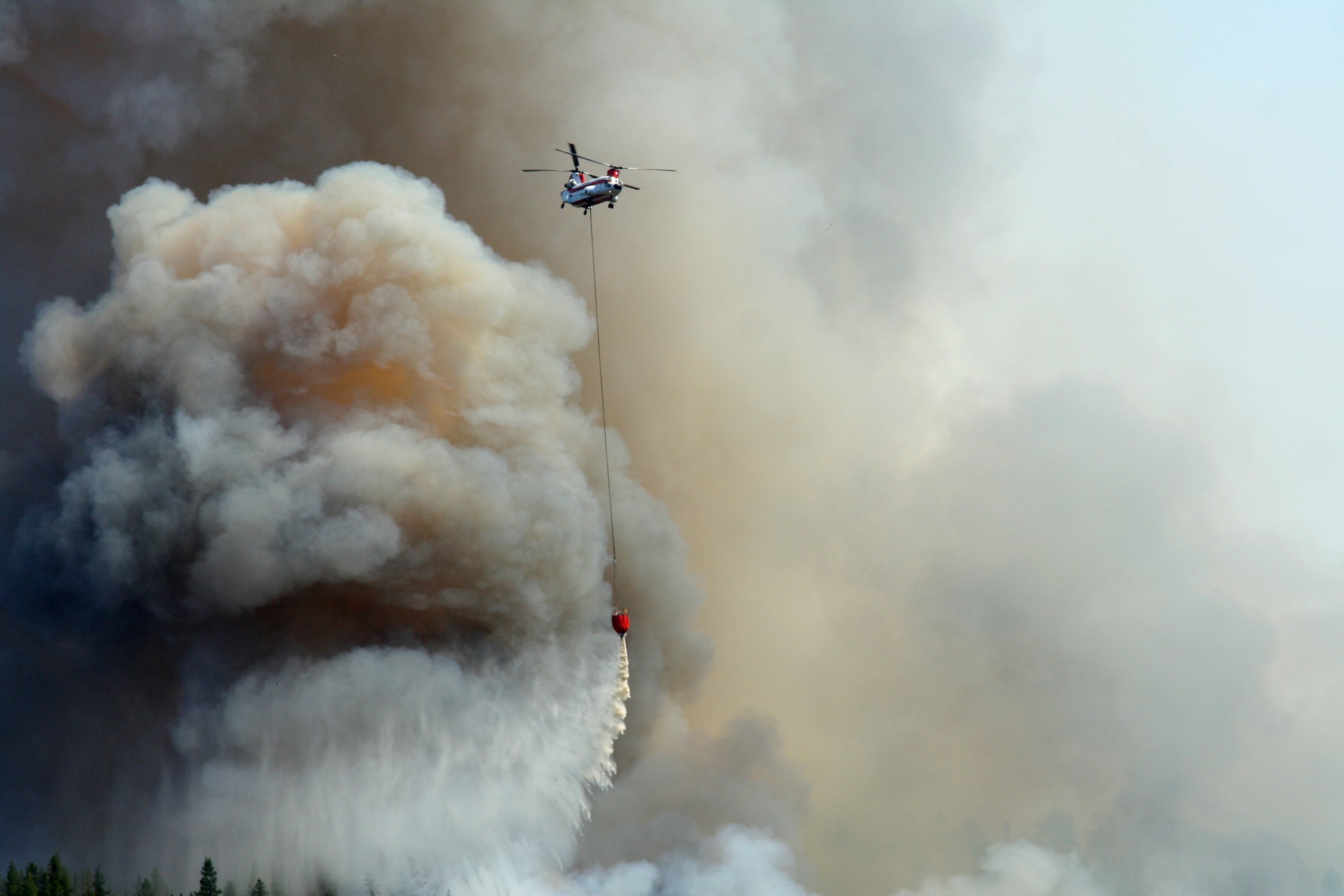Multi-District Aviation Litigation (MDL) after Air France 447
Air France 447 was operated as a scheduled passenger flight from Rio de Janeiro, Brazil to Paris, France, when it crashed on June 1, 2009. About three and one-half hours into the flight, the plane entered a high-altitude aerodynamic stall, from which it never recovered, and crashed into the Atlantic, killing all 228 passengers, cabin crew and aircrew. The Airbus A330-203 was Air France’s newest A330 at the time of the crash, and had undergone a major overhaul on April 16, 2009. It was the second and deadliest crash of an Airbus A330, causing a fair amount of aviation litigation activity.
The crash was investigated by France’s Bureau d’Enquêtes et d’Analyses pour la Sécurité de l’Aviation Civile (BEA), which released its final report on June 5, 2012. The report concluded that the aircraft’s pitot tubes were obstructed by ice crystals. The icing of the pitot tubes created inconsistent airspeed readings which automatically disconnected the autopilot. The crew reacted improperly, placing the aircraft into an overly aggressive angle of attack, causing it to climb at such a steep angle that air passing over the wings failed to provide lift. The aircraft remained at varying degrees of excessive pitch, and remained stalled during its entire three minute and thirty second descent from 38,000 feet despite the fact that engines ran at full power and were not defective. It crashed into the Atlantic Ocean killing everyone on board.
For general information, see Interim and Final reports on the accident on 1 June 2009 to the Airbus A330-203 registered F-GZCP operated by Air France flight AF 447 Rio de Janeiro-Paris. Paris: Bureau d’Enquêtes et d’Analyses pour la Sécurité de l’Aviation Civile (BEA), July 2, 2009, and July 5, 2012.
Fact Issues Framing Forum, Removal, MDL, The Montreal Convention, MMTJA, and FNC Considerations
In the typical aviation mass disaster where FNC and other considerations arise, the airline will be a foreign carrier. The accident will have occurred outside the United States or its airspace. The crash may involve a U.S. or foreign-manufactured aircraft. The passengers may be from the U.S. or they may be foreign citizens, but the majority of plaintiffs will be foreign. Component part manufacturers may be numerous and may be foreign or domestic.
The litigation arising from the AF 447 crash, which would become the multidistrict litigation known as In re: Air Crash Over the Mid-Atlantic on June 1, 2009, Multidistrict Litigation No.3:10-MD 02144, involved all of these situational considerations.
The aircraft was manufactured by the French Company Airbus S.A.S., which sourced components using numerous suppliers from Europe and the United States. The plane was equipped with two General Electric CF6-80E1A3 engines manufactured in the United States.
Among the 216 passengers were 126 men, 82 women and eight children, including 1 infant. There were twelve crew members on board. Due to the thirteen hour length of the flight, there were three pilots on board taking staggered rest periods. At the time the plane entered the stall, the pilot in command was on a rest period in a cabin behind the cockpit. Of the twelve crew members, eleven were French and one was Brazilian. There were passengers and crew representing thirty-three nationalities, including two Americans. The vast majority were French, Brazilian and German.
In March, 2010 the first twenty-three wrongful death lawsuits were filed against Airbus, the French manufacturer of the pitot tubes and several U.S. component- part suppliers in the United States District Court for the Southern District of Florida. The component part suppliers included Thales, the French manufacturer of the pitot tubes, as well as U.S.-based component part manufacturers including Intel, G.E., Rockwell, Motorola, Honeywell, du Pont and others.
Other wrongful death lawsuits were filed in U.S. District Courts in Texas, Illinois and California.
Wrongful death lawsuits filed by relatives of the Americans were filed in Houston. Due to the provisions of the Montreal Convention, which prevented the foreign plaintiffs from suing Air France in the United States, these were the only two lawsuits directly naming Air France as a defendant.
General Principles of Forum Non Conveniens
Principles for application of the FNC doctrine of a supervening venue provision which provides for dismissal to an adequate alternative forum are well established in the United States. In Piper Aircraft Co. v. Reyno, 454 U.S. 235 (1981), the Supreme Court made clear that defendant has the burden of proving both that an adequate alternative forum is available to plaintiffs and that the balance of private- and public-interest factors weigh in favor of litigation in the alternative foreign forum.
The Piper litigation arose from the crash of a Piper Aztec in the Scottish Highlands in July, 1975. The crash killed the pilot and five passengers. The twin-engine light utility plane was manufactured by Piper Aircraft in Pennsylvania, and fitted with Hartzell propellers manufactured in Ohio. The plane was operated by a British sky taxi service. The investigation by the British government after the crash found no evidence of any product defects.
Reyno, a legal secretary for the attorney filing lawsuits on behalf of the deceased passengers, was appointed administratrix of the estates. After Reyno filed negligence and strict product liability lawsuits in a California state court, Piper removed based on diversity jurisdiction and obtained a 28 U.S.C. § 1404(a) transfer to the Middle District of Pennsylvania based on Piper’s substantial business in that district. Hartzell moved to dismiss, or for transfer under 28 U.S.C. §1631 based on the conduct of business between Piper and Hartzell.
Both defendants then sought dismissal based on forum non conveniens. The district court, relying on the test in Gulf Oil v Gilbert, 330 U.S. 501 (1947), granted the motions, but the Third Circuit reversed, holding that FNC dismissals are not proper when the law of the alternative forum is less favorable to the plaintiff. The Supreme Court reversed, upholding the district court’s dismissal to Scotland based on FNC.
The Court noted that strict liability was not available as a cause of action in Scotland.
The Court of Appeals erred in holding that plaintiffs may defeat a motion to dismiss on the ground of forum non conveniens merely by showing that the substantive law that would be applied in the alternative forum is less favorable to the plaintiffs than that of the present forum. The possibility of a change in substantive law should ordinarily not be given conclusive or even substantial weight in the forum non conveniens inquiry.
454 U.S. 235, 247.
Factors in the Supreme Court’s decision about the adequacy of an alternative forum include whether the forum has jurisdiction over all of the parties to the action, and, a different, or even lesser remedy is sufficient.
We do not hold that the possibility of an unfavorable change in law should never be a relevant consideration in a forum non conveniens inquiry. Of course, if the remedy provided by the alternative forum is so clearly inadequate or unsatisfactory that it is no remedy at all, the unfavorable change in law may be given substantial weight; the district court may conclude that dismissal would not be in the interests of justice. In these cases, however, the remedies that would be provided by the Scottish courts do not fall within this category. Although the relatives of the decedents may not be able to rely on a strict liability theory, and although their potential damages award may be smaller, there is no danger that they will be deprived of any remedy or treated unfairly.
454 U.S. 235, 254-55.
After analysis of an adequate alternative forum, the analysis requires balancing of the parties’ private interests and the public interests of the forum. Private interests generally include relative access to the proof, availability of compulsory process to obtain witness testimony, cost, and the typically numerous practical considerations to make trial easy, efficient and less costly. Public interests include the resolution of local controversies on a local level, familiarity with governing law, and avoiding choice of law and conflicts. 454 U.S. 235, 242-43.
For FNC cases of general interest, see also Faat v. Honeywell Int’l, Inc., 2005 WL 2475701 (D.N.J. 2005) (example of foreign air disaster case with fact elements typical of case ripe for FNC dismissal); Blanco v Banco Indus. De Venezuela, S.A., 997 F.2d 974 (2d Cir. 1993) (forum adequate when procedures dissimilar); De Melo v. Lederle Labs., 801 F.2d 1058 (8th Cir. 1986) (alternative forum suitable if no punitive damages); Lockman Found. v. Evangelical Alliance Mission, 930 F.2d 764 (9th Cir. 1991) (FNC may still be suitable forum if no right to jury trial); Quackenbush v. Allstate Ins. Co., 517 U.S. 706 (1996) (factors in FNC); Piere-Louis v Newvac Corp., 584 F.3d 102 (11th Cir. 2009) (holding FNC is procedural); Chubb Ins. Co. of Europe v. Menlo Worldwide Forwarding, Inc., 634 F.3d 1023 (9th Cir. 2011) (discussing third-party actions in FNC cases); King v Cessna Aircraft Co., 2008 WL 276015 (S.D. Fla. 2008) (dismissal of foreign v U.S. passengers); Clerides v. Boeing Co., 534 F.3d 623 (7th Cir. 2008) (dismissal of foreign v U.S. passengers); Cheng v. Boeing Co., 708 F.2d 1406 (9th Cir. 1983) (dismissal of foreign v U.S. passengers).
The Montreal Convention
The Montreal Convention of 1999 is critical to any consideration of FNC in an aviation disaster. The Convention was ratified by the United States in September, 2003, and went into effect in November 2003. The Convention is a successor to the Warsaw Convention of 1929 and, in addition to important new provisions, consolidates and clarifies prior provisions of The Warsaw Convention. Convention for the Unification of Certain Rules for International Carriage by Air, opened for Signature at Montreal on 28 May 1999 (ICAO Doc No 4698).
The Convention applies to “all international carriage of persons, baggage or cargo performed by aircraft for reward.” Id. at Article 1 § 1.
When the Montreal Convention governs, damages provided under the convention are the only remedy available to foreign plaintiffs against a carrier. In El Al Israel Airlines v Tseng, 525 U.S. 155 (1999), the Court held that personal injury claims arising from aircraft operations within the scope of the Convention are not allowed unless permitted under the terms of the Convention. In light of the holding in Tseng, federal courts have held that the damages available under the Convention are the sole cause of action. See, e.g., Ugaz v. Am. Airlines, 576 F. Supp. 2d 1354 (S.D. Fla. 2008).
For purposes of FNC motions, Article 33 of the Convention provides that there are five forums in which a plaintiff may bring claims against a carrier:
- The domicile of the carrier;
- The principle place of business of the carrier;
- The place where the airline ticket was purchased;
- The place of destination; and,
- In personal injury cases, the principal and permanent place of residence of the plaintiff.
The so-called “fifth jurisdiction”, the plaintiff’s principal and permanent place of residence was added by the Montreal Convention, and expanded on the Warsaw Convention provisions governing proper forums. The principal and permanent residence is the “one fixed and permanent abode of the passenger at the time of the accident”. Article 33 § 3(b).
Under the fifth jurisdiction principle, a plaintiff may bring the lawsuit for personal injuries in the forum in which he or she has principal and permanent place of residence, and to or from which the carrier operates flights and in which the carrier leases or owns commercial premises by itself of by another carrier with which it has a commercial agreement. A “commercial agreement” means an agreement made between carriers and related to joint service of passengers by air. Article 33 § 3(a).
Defendants’ Motion To Dismiss on the Basis of FNC in AF 447
After the AF 447 actions were consolidated in the Northern District of California, Judge Charles Breyer dismissed all cases to France based on FNC. Judge Breyer performed a detailed FNC analysis and concluded that France was an adequate alternative forum, whatever its pacing may be, and that the balancing of private litigant and public interests dictated dismissal was proper. In re Air Crash Over Mid-Atlantic, 760 F. Supp. 2d 832 (N.D. Cal. 2010).
Judge Breyer noted at the outset, that nothing in the Montreal Convention suggests that the doctrine of forum non conveniens should not apply, and noted that the Montreal Convention is the “exclusive basis for a lawsuit against an air carrier for injuries arising out of international transportation.” Id., at 835, citing, Kruger v United Airlines, Inc., 481 F. Supp. 2d 1005, 1008 (N.D. Cal. 2007). Judge Breyer then noted that the party moving to dismiss based on FNC bears the burden of showing that there is an adequate alternative forum and that the balance of private and public interest factors favors dismissal. Id. at 839 (citing Lueck v. Sundstrand Corp., 236 F.3d 1137, 1142-43 (9th Cir. 2001)).
In Hosaka v. United Airlines, Inc., 305 F.3d 989, 993 (9th Cir. 1992), the court ruled that the Warsaw Convention was a constructive override to a court’s discretionary authority to consider a motion to dismiss based on FNC. Judge Breyer rejected the Hosaka court conclusion that the Warsaw Convention was a constructive override to a court’s discretionary authority to consider a motion to dismiss based on forum non conveniens. 760 F. Supp. 2d 832 at 839-840 (citing Hosaka v. United Airlines, Inc., 305 F.3d 989, 993 (9th Cir. 2002)). Noting the Montreal Convention’s more recent ratification and the position taken by the United States during treaty negotiations supporting forum non conveniens dismissal, Judge Breyer followed the rationale of the courts that have applied the forum non conveniens doctrine in the context of a Montreal Convention case. See Pierre-Louis v. Newvac, 584 F.3d 1052 (11th Cir. 2009), aff’g sub nom. In re West Caribbean Airways, S.A., 619 F. Supp. 2d 1299 (S.D. Fla. 2007).
As to the elements of FNC, the court found that plaintiffs did “not really contend” that France was an alternative forum, but focused on the assertion that France’s court system is slower and could take several years to conclude complex matters. 760 F. Supp. 2d. at 842. Therefore, France was an adequate alternative forum.
The Court noted that the private interest factors weighed heavily in favor of dismissal. The official accident investigation and a criminal investigation were being conducted in France, the physical evidence was in France, defendants had agreed to produce discovery in France, there was no dispute that Air France could be sued in France, and there was “the ability to bring parties together in France in a procedurally sensible fashion “ which would make the trial easier, more expeditious and less expensive. Id. at 844.
Public interest factors also weighed heavily toward dismissal. Judge Breyer, citing the public interest factors outlined in Piper and Leuck, reasoned that France was more interested in the litigation than the U.S. There was a plurality of French citizens on a French flight with a French destination. Although the rights of the two Americans were legitimate, they were less significant than French interests. Air France could also be sued directly in France, avoiding “tension” with the Montreal Convention created by the manufacturing defendants attempts to sue Air France as a third-party. A French forum would also avoid the prospect of U.S. courts having to apply French law. Judge Breyer also noted that the cases could create unnecessary burdens on the federal judiciary. Finally, the court stated that the deference to be afforded the U.S. plaintiffs’ choice of forum “does not and cannot” prevent the court from dismissing the case to the adequate alternate forum of France. Id. at 846-47.
Plaintiffs May Not Create An Unavailable Forum
After Judge Breyer denied plaintiffs’ motion for reconsideration, some of the plaintiffs dismissed the French defendants and refiled, without any substantial change in the facts. Eight of the U.S. component part manufacturers moved to dismiss two refiled lawsuits. Judge Breyer agreed with defendants that plaintiffs had created the forum uncertainty, and could not make France an unavailable forum simply by dismissing the French defendants. Judge Breyer also found that the mere fact that precisely the same lawsuit could not be heard in France did not make France an unavailable forum. He again dismissed based on the basis of FNC. In re Air Crash Over Mid-Atlantic, 792 F. Supp. 2d 1090 (N.D. Cal. 2011).
Judge Breyer reasoned that although plaintiffs had freedom to craft their own complaints as they wish, that did not prevent dismissal based on the prior FNC Order, when plaintiffs engaged in pleading practices designed to defeat jurisdiction in the foreign forum and circumvent the order. Plaintiffs’ good faith and transparency with the court and opposing parties about their desire not to litigate in France was not the test for whether dismissal was appropriate. Id. at 1096-97.
“Plaintiffs’ argument that, as a general matter, they are free to frame their complaints as they wish ignores entirely the fact that forum non conveniens is by its nature a doctrine that limits plaintiffs’ choices,” Judge Breyer ruled. “Indeed, plaintiffs cite no forum non conveniens cases condoning a post-dismissal refiling designed to make the foreign forum unavailable by omitting the parties necessary to establish jurisdiction abroad. Nor is the court aware of any such authority.”
Id. at 1097.
Judge Breyer also noted that the plaintiffs’ concern that since an FNC dismissal would conditionally obligate them to agree to French jurisdiction, plaintiffs could be without a remedy if the case was dismissed in France. Judge Breyer ruled that dismissal sua sponte by a French court was not supported by sufficient authority, and denied plaintiffs’ request to return to the United States if the case was dismissed in France.
State Courts May Have Varying Standards for Dismissal Based on Forum Non Conveniens
While most states recognize the doctrine of forum non conveniens, some states may have only incorporated the doctrine into common law recently. States may also have differing standards for analyzing whether there is an adequate alternative forum and whether the balancing of the private- and public-interest considerations dictates stay or dismissal based on forum non conveniens.
The state most recently incorporating the doctrine of forum non conveniens into state law is Oregon. On April 16, 2016, the Oregon Supreme Court ruled for the first time that Oregon law included the doctrine of forum non conveniens. Espinoza v Evergreen Helicopters, Inc., 359 Or. 63 (2016). The opinion illustrates how state standards for dismissal based on forum non conveniens vary, even though most state courts generally adhere to the framework generally set out in Gulf Oil Corp. v. Gilbert, 330 U.S. 501 (1947) and discussed in Piper Aircraft Co. v. Reyno, 454 U.S. 235 (1981) and cases since.
On March 11, 2008, a 2007 Bell 412EP (N417EV) crashed into remote mountainous terrain near Santa Cruz, Cajamarca, Peru. The United States certificated airline transport pilot, the Peruvian provisional co-pilot and eight Peruvian miners were killed by impact forces and a post-crash fire. The helicopter was owned by Evergreen Helicopters, Inc., and leased to Helinka S.A.C., a Peruvian commercial aviation services provider. Evergreen provided the helicopter, pilots, mechanics, parts, and an on-site contract administrator. The helicopter was operating on a company visual flight rules flight plan under Peruvian flight regulations.
The accident was investigated by the Peruvian government. See Informe Final, CIAA-ACCID-005-2008 “Accidente del helicoptero Bell 412EP, de matricula N417EV, operado por la compañía HELINKA SAC, ocurrido el 11 de marzo de 2008, en el Cerro La Cárcel, Distrito de Catache, Provincia de Santa Cruz, Departamento de Cajamarca”, Ministerio de Transportes y Communicaciónes, Comisión de Investigación de Accidentes de Aviación. http://www.mtc.gob.pe/transportes/aeronautica_civil/ciaa/ciaa.html. (Last visited 4/27/16).
In its motion to dismiss wrongful death lawsuits filed by relatives of the deceased Peruvian miners, Evergreen argued:
- The majority of evidence was in Peru.
- Third-party witnesses were in Peru.
- A crash site view would only be possible in Peru.
- There were practical difficulties in Oregon such as a need for interpreters.
- Evergreen would be unable to implead Helinka as a third-party defendant in Oregon.
- The crash occurred in Peru, plaintiffs were Peruvian nationals, and Peru had the strongest interest in the controversy.
In response, plaintiffs argued:
- The doctrine of forum non conveniens had never been expressly recognized in Oregon.
- Oregon courts are barred from dismissing an action based on forum non conveniens whenever there is jurisdiction and venue in Oregon.
- Evergreen was headquartered and had its principal place of business in Oregon and substantial evidence was located in Oregon.
- A factor in the cause of the crash may have been defects in avionics installed by Evergreen in Oregon.
359 Or. at 71-72.
The trial judge granted Evergreen’s motion to dismiss based on forum non conveniens. The Oregon Court of Appeals reversed, based in part on the trial court’s failure to make sufficient findings on the availability of evidence in Peru.
The Oregon Supreme Court granted Evergreen’s petition for review and considered two issues: (1) whether the doctrine of forum non conveniens is available under Oregon law, and (2) what standards guide its application.
Plaintiffs argued that the doctrine of forum non conveniens should be rejected entirely, contending its origin was “dubious” and that it “is a parochial, xenophobic and outcome-determinative doctrine that permits reverse forum shopping by powerful corporations seeking to altogether avoid accountability in their home forum for transnational torts.” 359 Or. at 76.
Evergreen argued (in part) that the Oregon Court of Appeals gave too much deference to plaintiffs’ choice of Oregon as their chosen forum. In support of its argument, Evergreen relied on the holding in Piper Aircraft Co., that the ordinary presumption in favor of the plaintiff’s forum choice applies with less force where the plaintiff is not a resident of that forum. 359 Or. at 75 (citations omitted).
The Oregon Supreme Court rejected Evergreen’s argument and agreed with the Washington Supreme Court that there “is no principled reason to vary the degree of deference afforded to the plaintiff’s choice of forum…we defer to a plaintiff’s choice…because it is the plaintiff’s right to choose from those forums that are available to it.” 359 Or. at 105.
The court ruled that the trial judge did not err when it found that Peru was an adequate alternative forum. However, the court was critical of the trial judge for ruling that a trial in Peru would “best serve” the convenience of the parties. The court concluded that the trial judge applied the “wrong substantive standard” and abused its discretion when it ruled that a trial in Peru would be “more convenient” rather than “so inconvenient as to be contrary to the ends of justice”. 359 Or. at 119-120.
The Oregon Supreme Court adopted a strict standard, ruling that a trial court may dismiss an action based on forum non conveniens only when
“…the relevant private-and public-interest considerations weigh so heavily in favor of litigating in that alternative form that it would be contrary to the ends of justice to allow the action to proceed in the plaintiff’s chosen forum.”
359 Or. at 102.
Multidistrict Litigation
- MDL statute, 28 U.S.C. § 1407 enacted in 1968
- Statute provides in part that “[w]hen civil actions involving one or more common questions of fact are pending in different districts, such actions may be transferred to any district for coordinated or consolidated proceedings”
- Transfers made by JPML for “convenience of parties and witnesses and will promote the just and efficient conduct of such actions”
- Each action transferred remanded to transferor court for trial
- Transferee forum governs procedural issues
- Transferor court governs substantive issues
- JPML consists of seven circuit and district judges, no two from same circuit.
- Concurrence of four JPML members needed for any action
- JPML may separate any claim, cross-claim, counter-claim, or third-party claim and remand any claims before remainder of the action is remanded.
- No discretion to transferee court to remand for trial. Lexecon Inc. v. Milberg Weiss Bershad Hynes & Lerach, 523 U.S. 26 (1998)
- No authorities for identification of transferee court in aviation disaster or other mass torts
JPML may consider:
- Convenience of parties and witnesses
- Accident location
- Experience, suitability and caseload of transferee district
- Location of evidence
- Existence of related cases in transferee court
- Location and convenience of counsel
- Potential number of tag-along cases.
MDL Consolidation Distinguished from 1404(a) Transfer
Transfer pursuant to 28 U.S.C. § 1407 must be distinguished from transfer under 28 U.S.C. § 1404(a), which provides:
“For the convenience of parties and witnesses, in the interest of justice, a district court may transfer any civil action to any other district or division where it might have been brought or to any district or division to which all parties have consented.”
Section 1404(a), enacted in 1948, provides no standard for measuring convenience in mass tort cases, but the statute was enacted to allow the most convenience to the greatest number of parties, and was drafted and enacted in accordance with the principles of forum non-convenience. Yale M. Lyman, Factors of Choice for Venue Transfer under 28 U.S.C. 1404(a), 41 Cal. L. Rev. 507 (1953).
- Parties more likely to obtain 1404(a) transfer if negotiated
- Remand to transferor district for trial not required
- Parties may seek 1404(a) transfer if formation of MDL appears imminent for trial in transferee court
- Provides for transfer to different division in same district court
Considerations in Parallel State and Federal Cases and When the Government is a Party
Aviation accidents which give rise to parallel state and federal court cases present special challenges. These include a danger of inconsistent rulings, difficulty coordinating discovery in forums with different procedures and scope of discovery, different experience with federal agencies, and addressing ambiguities over whether a particular issue is substantive or procedural. See In re Helicopter Crash Near Weaverville, California, 8/5/08 MDL Case No. 3:09-md-2053(Mo) D. Or.; William Henry Coultas, individually, and his wife, Christina Coultas, individually, v. General Electric Company, Multnomah County Circuit Court Case No. 1002-02743; Estate of Roark Schwanenberg v General Electric Company, Multnomah County Circuit Court Case No. 1002-02742.
On August 5, 2008, a Sikorsky S-61N model helicopter crashed in the Trinity Alps National Forest in northern California while transporting firefighters pursuant to a contract between Carson Helicopters and the U.S. Forest Service. The pilot, a USFS inspector-pilot, and seven contractor-employed firefighters were killed. The copilot and three firefighters were seriously injured. The helicopter was designed and manufactured by Sikorsky Aircraft Corporation. It was nearly 40 years old and had flown well over 30,000 hours. It was powered by two CT58-140-1 model engines designed and manufactured by GE. A third-party manufactured the fuel control units on the engines. The crux of plaintiffs’ complaints was that the pressure regulating valve in the fuel control unit was defectively designed and manufactured, causing a loss of power on the takeoff ascent and a crash seconds later.
NTSB investigators produced over 3,500 pages of data, including more than a dozen factual reports. The NTSB staff investigation found that Carson (1) intentionally understated the helicopter’s empty weight, (2) altered the power available chart to exaggerate the helicopter’s lift capability, and (3) used unapproved above-minimum specification torque in performance calculations. It also found that the helicopter had been topping on its two prior flights, and it had just refueled before the crash flight, taking on additional weight. NTSB staff investigation found that the flight crew failed to appreciate and address the prior approaches to the helicopter’s maximum performance capability. NTSB staff investigators also found that the helicopter was at least 1,000 pounds overweight.
Lawsuits were filed by the injured firefighters and families of the deceased in federal courts in Connecticut, California and Oregon. In June 2009, the cases were consolidated into an MDL in the District of Oregon. Carson filed third-party complaints against the United States. Lawsuits filed on behalf of the pilots in Oregon state court were removed by defendants pursuant to 28 U.S.C. §1331 on the basis that federal questions arose regarding the USFS’ effective status as operator of the flight pursuant to an exclusive use contract and the federal Interagency Helicopter Operations Guide. Defendants also argued that additional federal questions arose pursuant to FAA rules and regulations and NTSB operations. The court rejected defendants’ arguments that the federal agencies actions were necessarily at the center of a federal question as required by Grable & Sons Metal Products, Inc. v. Darue Engineering & Manufacturing, 545 U.S. 308 (2005). The pilot cases were then remanded to state court.
The MDL included lawsuits filed by and on behalf of the ten injured and deceased firefighters, Carson’s workers’ compensation carrier, and the Estate of the deceased inspector pilot. In addition, Estate of the deceased PIC and co-pilot obtained permission to intervene into the federal actions although their state court actions were also pending.
Defendants denied Plaintiffs’ allegations and contended that the engines received ample fuel flow during the takeoff on the final flight. Consistent with the findings of NTSB staff investigators, defendants argued that the helicopter crashed because Carson gave the pilots and the USFS erroneous weight and takeoff power available charts that significantly understated the helicopter’s weight and overstated its load carrying capacity. Defendants also argued, consistent with NTSB staff factual reports, that the flight crew failed to appreciate and address the helicopter’s arrival at maximum performance capability on the two prior flights. The state court judge excluded the entire NTSB fact record except for two short laboratory reports.
Two years after the lengthy civil trial in state court, two former Carson employees pleaded guilty to federal conspiracy and other charges arising from the intentional falsification of the weight and takeoff power available charts and were each sentenced to lengthy prison terms.
Considerations for Aviation Disasters with parallel MDL and State Court Cases
- Coordination of separate discovery procedure and scope in separate forums
- Binding authority/ conflicting rulings
- Differing interpretations of substantive and procedural law
- Relative familiarity of state court judges with federal agencies and aviation, FAA, DOT, NTSB
- Relative familiarity of state court judges with federal statutes, e. GARA
- Vastly differing jury selection methods and scope
- Experts
- Certification of questions of law
- Claims or defenses available to the government
Pretrial Choice of Law Issues
- Choice of law statutes in multiple states
- Cafeteria plan approach to COL on each issue
- Availability of punitive damages
- Wrongful death statutes
- Statutes of limitation and repose
- Noneconomic damages caps
- Comparative fault
- Allocation of fault to settled parties
The Multiparty, Multiforum Trial Jurisdiction Act
Although the Warsaw and Montreal Conventions addressed many aspect of air crash litigation, they did not specifically address U.S. Federal Court handling of mass disaster litigation, and addressed only aviation related cases. In 2002, the Multiparty, Multiforum Trial Jurisdiction Act (MMTJA) was enacted to create greater efficiency in the federal system. The MMTJA grants district courts original jurisdiction where minimal jurisdiction requirements are met, and in which the cases arise out of a “single accident, where at least 75 natural persons have died in the accident at a discrete location”. The permissible lawsuits include both wrongful death and personal injury.
The first case arising under the MMTJA was the Rhode Island Station nightclub fire on November 20, 2003 in which 100 people were killed and 230 injured. Lawsuits were filed throughout New England in state and federal courts. Passa v. Derderian, 308 F.Supp.2d 43 (D.R.I., 2004).
The MTJA statute, 28 U.S.C. § 1369, widely broadens federal jurisdiction in mass disaster cases, and provides that the district courts will have original jurisdiction where:
- A defendant resides in a State and a substantial part of the accident took place in another State or other location, regardless of whether that defendant is also a resident of the State where a substantial part of the accident took place;
- Any two defendants reside in different States, regardless of whether such defendants are also residents of the same State or States; or
- Substantial parts of the accident took place in different states.
28 U.S.C. §1369 (a)(1-3).
Under the MMTJA, “minimal diversity” exists between adverse parties if any party is a citizen of a state and any adverse party is a citizen of another state or a foreign state. Corporations are deemed to be a citizen of any state in which it is incorporated, or has its principal place of business, and is deemed to be a resident of any state in which it is licensed to do business or is doing business. 28 U.S.C. 1369 (c)(1-2). The district courts must abstain from hearing any action in which the “substantial majority” of all plaintiffs are citizens of a single state in which the primary defendants are also citizens, and any claims that are governed primarily by state law. 28 U.S.C. 1369 (b)(1-2).
Therefore, the MMTJA provisions providing for removal are much broader than the diversity jurisdiction requirements under 28 U.S.C. §1332.
A recent case addressed the MMTJA in the context of an aviation disaster. On December 30, 2015, the U.S. District Court for the Northern District of Illinois granted the French company Airbus S.A.S.’s Rule 12(b)(2) motion to dismiss for lack of personal jurisdiction. Siswanto, et. al. v. Airbus S.A.S., 2015 WL 9489952. The case was brought under the Multiparty Multiforum Trial Jurisdiction Act of 2002 (“MMTJA”). The court reasoned that since the case was brought under the MMTJA, Fed. R. Civ. P. 4(k)(l)(C) and the MMTJA enabled the Court to consider Airbus’s contacts with the United States as a whole, and not just the state of Illinois. However, nothing in the statutes overrode Airbus’s constitutional due process protections governing the Court’s exercise of personal jurisdiction.
The case arose from a December 28, 2014 crash of Air Asia Flight No. 8501, an Airbus A320-216 flying from Indonesia to Singapore. The heirs and personal representatives of the deceased brought product liability and negligence claims against several defendants, including Airbus.
There was no dispute that Airbus was incorporated and had its principal place of business in France. For at least the past five years, Airbus had not maintained any offices or employees in the U.S. or owned or rented property in the U.S. All manufacturing on the aircraft occurred in Europe, and none of Airbus’s subsidiaries in the U.S. undertook this work. The A320-216 had been issued a Type Certificate by the European Safety Agency but not the FAA. The aircraft was sold to Air Asia Berhad, a Malaysian airline carrier that did not operate in the U.S. and the aircraft had never been flown in the U.S.
Airbus moved to dismiss for lack of minimum contacts under the Fifth Amendment Due Process Clause. Plaintiffs proceeded only under a theory of general personal jurisdiction arising from Airbus’ extensive contacts with the United States as a whole. The court noted that the traditional “minimum contacts” test from International Shoe still governs even when the basis of personal jurisdiction involves a statute providing for nationwide service of process. KM Enters., Inc. v. Global Traffic Techs., Inc., 725 F.3d 718, 723, 730-31 (7th Cir. 2013) (citations omitted).
In KM Enterprises, the court reasoned that when a federal statute authorizes nationwide service of process, the scope of the minimum contacts test exceeds the forum state’s long-arm statute, and requires “continuous and systematic general business contact” such that Airbus is “essentially at home in the forum, the U.S., not just the State of Illinois.” See also, Abelesz v. OTP Bank, 692 F.3d 638, 654, 656 (7th Cir. 2012) (citations omitted).
Strategic Considerations Framing Forum, Removal, MDL, The Montreal Convention, MMTJA, and FNC Considerations
- State or federal forum.
- JPML may or may not consider wishes of transferor court in retaining case for pre-trial purposes.
- May require transferee court to sort through multiple choice-of-law conflicts.
- Impact on FNC motions.
- Removal under 28 U.S.C. § 1369 or 28 U.S.C. § 1332.
- Are related actions removable.
- Government contracts.
- Governments as parties, particular government agency considerations.
- Parallel state court actions may complicate discovery, allow multiple bites at the apple.
- In aviation cases, if no statute of limitations issues, some actions such as hull cases may be filed after all other cases resolved or tried. JPML may or may not transfer. See, e.g., In re Helicopter Crash Near Wendell Creek, British Columbia, on August 8, 2002, Multidistrict Litigation No. 3:04MD 1694 (SRU) (D.CT.).
- Choice of law.
- S. code-share carrier and defendants.
- Federal court judges much more familiar with relevant federal agencies, NTSB, FAA, and DOT which may have significant impact of discovery.
- Plaintiff-friendly jurisdictions/likelihood of removal.
- Relative objective strength of liability arguments.
- Personal jurisdiction.
- Montreal Convention specified remedies and potential impact on FNC motions.
- Third-party actions, and whether governed by Montreal Convention see, e.g., In re Air Crash Near Nantucket Island, Mass, 340 F. Supp. 2d 240 (E.D.N.Y. 2004).
- Whether a foreign air carrier is a target defendant.








